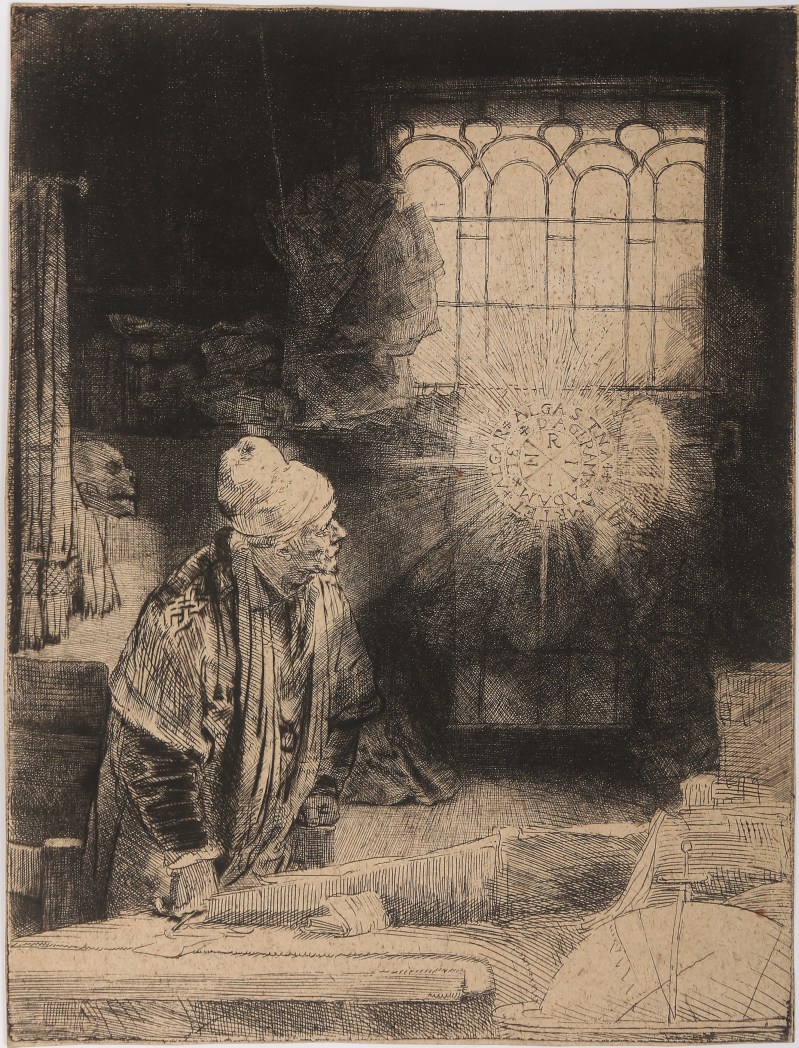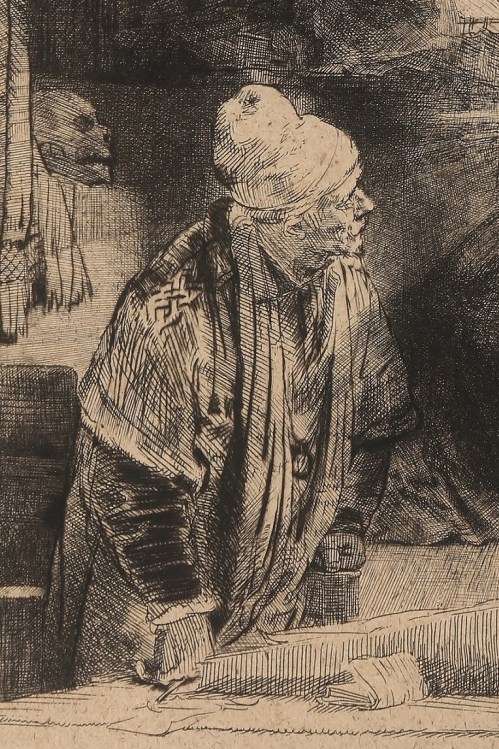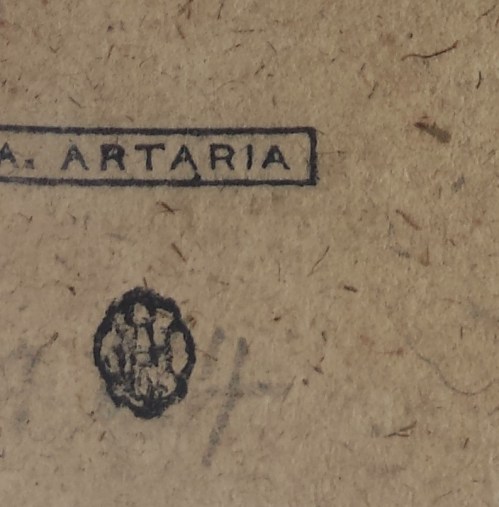REMBRANDT: A Scholar in his Study – ‘Faust’ - c. 1652
SOLD
Etching and drypoint, 210 x 160 mm. Bartsch 270, Hind 260, Biörklund and Barnard 52-4, New Hollstein 270, I/VII.
Impression of the 1st state (of 7), before the posthumous rework.
Superb impression printed on heavy oatmeal paper, with strong contrasts within the shadows and much burr in particular on the chin, the clothes and the watch of the sitter.
Impression trimmed at the subject. In excellent condition, without any defect. Collectors’ marks verso: August Artaria (Lugt 33) and André Hachette (Lugt 132).
Provenance:
- Collection of August Artaria (1807-1893). The publishing house Artaria & Co. was founded in Vienna in 1769 by Carlo Artaria (1747-1808). He published wood engravings and geographical maps and from 1778 was the first to print sheet music. August Artaria, his grandson, directed the company from 1842. His collection of old master prints, sold in Vienna in 1896, numbered 1190 items. In his work Les Marques de collection, published 1921, Frits Lugt wrote under number L.33: " Superb series of prints by Rembrandt, numbering 606 items, almost complete, remarkably rich with proofs in different states, this wealth having already been mentioned by Rovinski (p. XLV, note 2) and Dutuit (supplement to vol. II, p. XVIII)." In À travers cinq siècles de gravures (1903), Gustave Bourcard listed eleven impressions of ‘Faust’ in the first state that were sold at public auctions, one of which was the impression in the Artaria sale, "with a lot of burr" (pp. 170-171).
- Collection of André-Jean Hachette (1873-1952): Collection de Mr. A. Hachette sold in Paris in 1953 (expert: M. Rousseau), numbering 83 items.
After 1647, Rembrandt printed some proofs on oriental papers made in Japan and imported from Dutch Indies. ‘This love of experiment was to characterise his print output in the following years’ (Erik Hinterding). The paper known as oatmeal paper was an heavy paper made from the pulp residues. ‘This paper was originally used for making cartridge cases for firearms, and for that reason is also known as cartridge paper in English’ (E. Hinterding). Rembrandt used it in particular for proofs of Jan Asselijn, painter (NH 236), A Scholar in his study - ‘Faust’ (NH 270) and St Jerome reading in an Italian Landscape (NH 275).
The texture and the blond color of the oatmeal paper provide our proof with a warm tone, which emphasizes the shadows and gives the light a supernatural appearance which especially fits the subject.
Impressions of the 1st state of ‘Faust’ printed by Rembrandt on oatmeal paper are particularly sought after. In 2013, the New Hollstein catalogue listed 8 impressions on oatmeal paper, in Boston (Museum of Fine Arts), Hamburg (Hamburger Kunsthalle), Londres (British Museum), New York (Metropolitan Museum), Norwich (Norwich Castle Museum), Rotterdam (Museum Boijmans Van Beuningen), Vienne (Albertina) (New Hollstein, 2013, Text II, p. 215).
‘Faust’ is present in the 1679 inventory by Clément de Jonghe under the title "practiseerende alchimist". The figure of the scholar surprised by a mysterious apparition in his study has traditionally been described as ‘Faust’, the 16th century German alchemist and astrologist. He was also identified alternately as a disciple of the religious sect of Faustus Socinus, or as a Jewish Kabbalah scholar. This last version is the one advocated by Deni McIntosh McHenry in his article examining the print’s several interpretations (McIntosh McHenry, 1989).
References: Frits Lugt, Les Marques de collections de dessins & d’estampes, website, Fondation Custodia, 2016 : nos. L.33 and L.132; Auction’s sales catalogues: Estampes de Rembrandt et de Dürer…, Mai 6-13, 1896, Vienne (Artaria & Co.); Collection de Mr. A. Hachette. Choix d'estampes anciennes des écoles allemande et flamande, 1953, 11 juin 1953, Paris (M. Rousseau); G. Bourcard, À travers cinq siècles de gravures, 1350-1903, Rapilly, Paris, 1903; Erik Hinterding and Jaco Rutgers, New Hollstein, Rembrandt, 7 vols, 2013; Erik Hinterding: Rembrandt as an etcher. Vol 1: The practice of production and distribution, 2006, pp. 112-114: « Special and oriental types of paper »; Rembrandt's "Faust in His Study" Reconsidered: A Record of Jewish Patronage and Mysticism in Mid-Seventeenth-Century Amsterdam, Deni McIntosh McHenry, Yale University Art Gallery Bulletin, (Spring, 1989), pp. 9-19.






